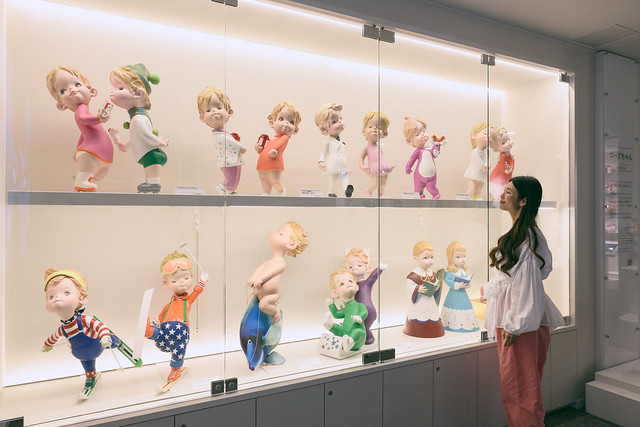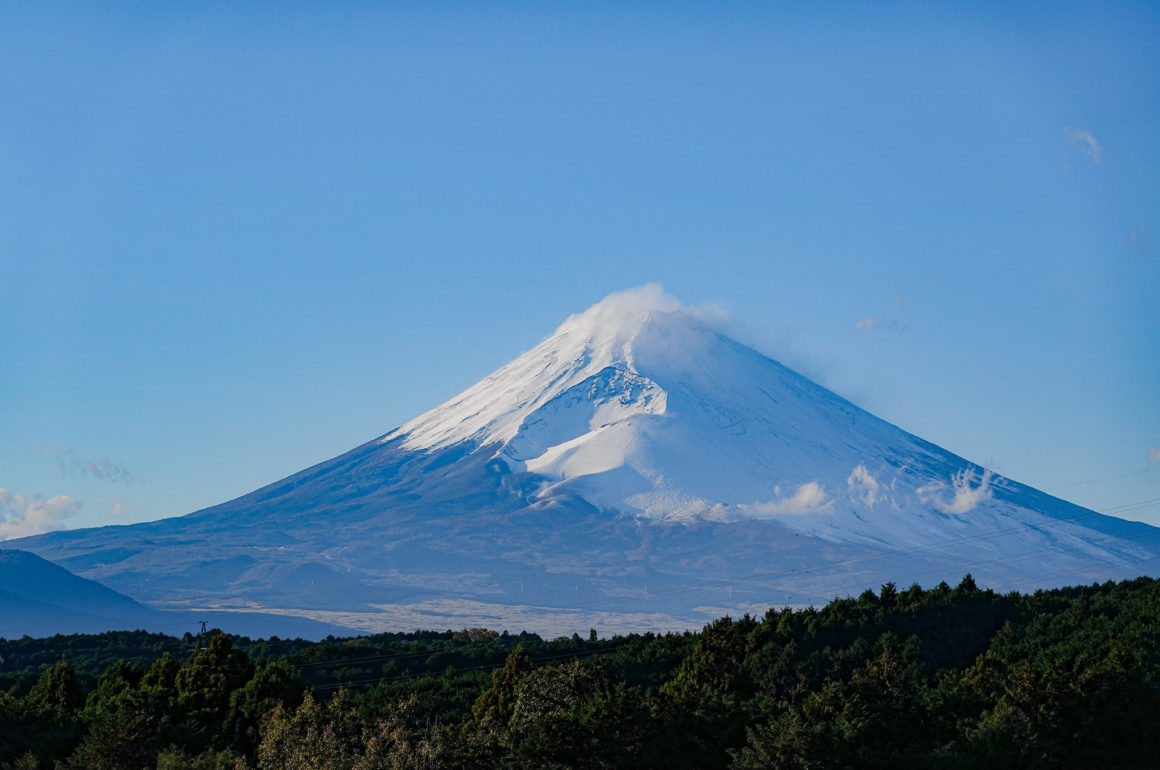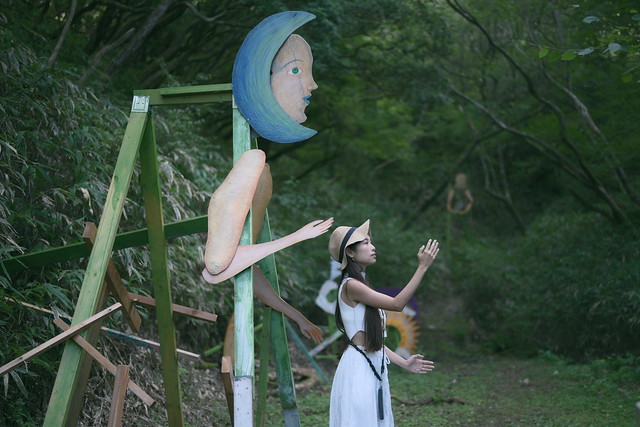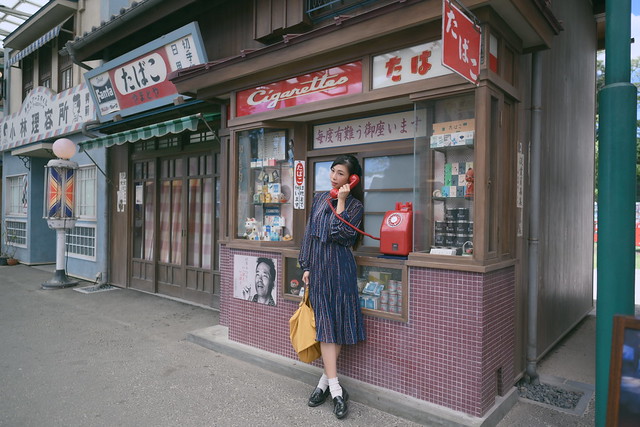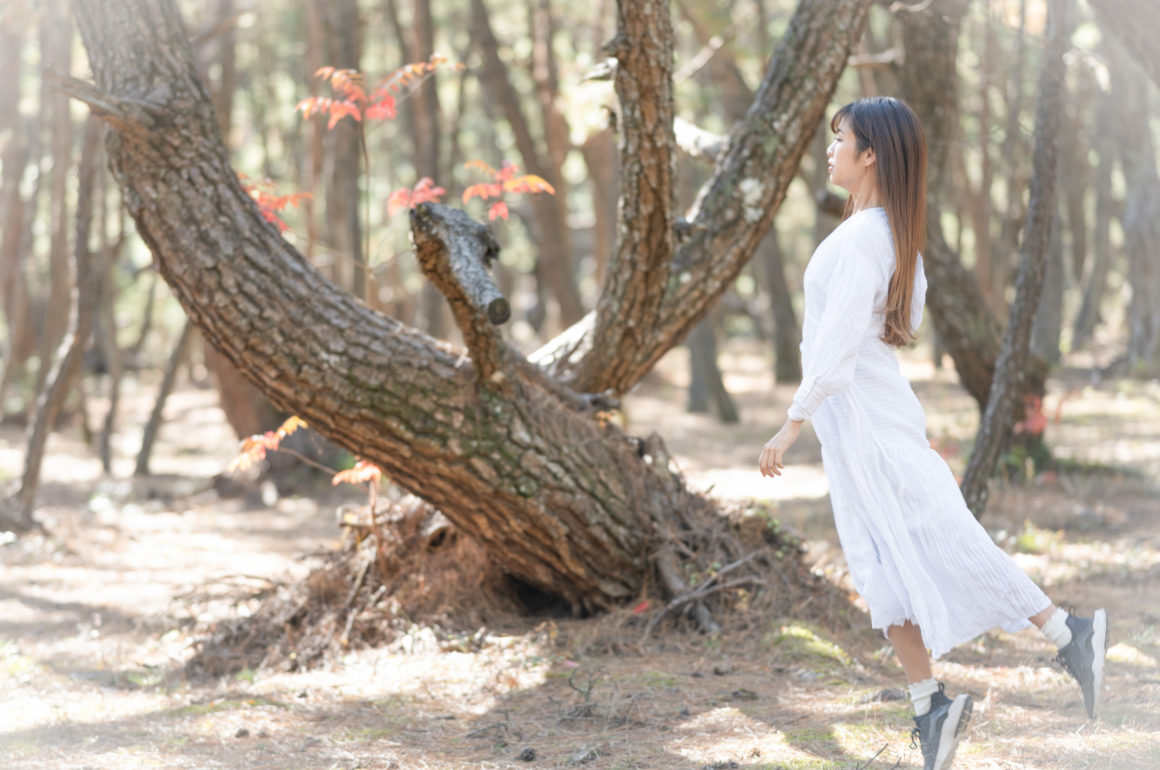
Hello travellers! If you are planning to travel to the Kansai region soon, this post is for you.
As many of you might be aware, there have been announcements of a massive price hike all types of Japan Rail Passes, which have caused many keen tourists to have second thoughts about booking their flights to Japan, given airfares nowadays are not exactly the most affordable either.
Although I think that international travelers are still enjoying huge benefits in saving if they properly utilize their now more-expensive-passes compared to us residents here who could not even get our hands on those delicious discounts, I do want to give an alternative if you are looking for something else, especially when you are bored of the usual (and now very, very crowded) Kyoto and Osaka.
Introducing Kintetsu Railway’s KINTETSU RAIL PASS!

Come on, let’s open that door to more amazing places in Japan!
KINTETSU RAIL PASS
What is KINTETSU RAIL PASS?
I know the train system in Japan can get rather intimidating. It took me years to get used to Tokyo’s spider-web subway system, but if you are going to Kansai, chances are it would be very helpful if you familiarize yourself with Kintetsu Rail Pass.
Kintetsu Railway has the largest railway system in Japan, after JR. The areas it covers include 5 prefectures: Osaka, Kyoto, Nara, Aichi (Nagoya) and Mie.

There are 4 types of passes which you can learn about more over at Kintetsu’s website, but if you are planning to sightsee the Kansai region for more than 2 days, I would definitely recommend getting the KINTETSU RAIL PASS Plus for five-day unlimited rides which is JPY5100. If you purchase it before your trip to Japan, you can even enjoy a discounted rate of JPY4900!
That is insanely affordable, considering that a round trip on the limited express would have made the pass worth all that’s paid.
The KINTETSU RAIL PASS Plus covers all of Kintetsu Line, with the additional bonus of Iga Tetsudo Line, as well as bus rides for Nara Kotsu Bus, Mie Kotsu Bus and more.
Who should get the KINTETSU RAIL PASS?
Since the pass covers a large part of Nara and Mie prefecture, it would be most beneficial if you are planning to visit these two prefectures, which has, I must admit, so so so much to offer than anyone could ever imagined, including myself. Mie itself is a treasure trove of hidden gems, I recommend you to go through my travel articles about Mie Prefecture to decide for yourself.
For those who fly in from Kansai International Airport, I would recommend you to spend your first or last day in Osaka for the long-due shopping and city vibe, and spare the rest of your trip deep-diving into the less explored destinations in Nara and Mie.
I will be detailing my 3-Day trip using the KINTETSU RAIL PASS, although for you travelers you should be fitting in more attractions into your itinerary than mine, but hopefully what you will read below will give you an idea of the unique experiences you can enjoy in Mie and Nara.
Are we ready? Let’s go!
NARA
One of the coolest things about KINTETSU RAIL PASS is that you can get unlimited rides on Kintetsu’s many sightseeing trains, as long as you top up for the limited express fare.

This is AONIYOSHI, Kintetsu’s latest sightseeing limited express that connects Osaka and Kyoto to Nara. We took our ride from Kyoto Station, and it takes about just 40-mins to Kintetsu-Nara Station.
Not only Wi-Fi service is available, there are also luggage compartments where you can store your large luggages, so you can just enjoy the ride on the spacious seats.

There’s a sales counter in Car 2, where you can order a quick snack and drinks, get your hands on limited edition souvenirs, many of which made in Nara!

Just shortly before we arrive at Kintetsu-Nara Station (about 4-mins away if I am not mistaken), you can spot the Heijo Palace–the imperial palace back in Nara period, before the capital was moved to Kyoto. With Kintetsu you can easily access one of the most underrated historical attractions in Nara.
Check out AONIYOSHI here!
Nara Park

Obviously, if you come to Nara, you wouldn’t want to miss out the most prominent spot of Nara which made the prefecture known worldwide.
Good news: this iconic park is located just a 5-min walk away from Kintetsu-Nara Station.
Although I must admit that the park is now filled with international tourists again, the deers are, in my observation, much, much docile compared to what I was told by many–that they are aggressive and forever hungry for snacks. During my visit, most deers were just chilling under the shades, ignoring the tantalizing senbei we have in our hands, except for a few, who would duly perform the expected Japanese bow in exchange for an afternoon snack.
I would still caution travelers to be aware of any brouchures, tickets, or edibles you have in your pockets, as we might encounter a greedy stag anytime who would stealthily snatch it from you, and most importantly, don’t have them chew on your KINTETSU RAIL PASS!
Tsukihitei 月日亭

For lunch, since I am a hopeless wagyu lover, we went to Tsukihitei, a Japanese-style restaurant right along Higashimuki Shopping Street, which is just right beside the Kintetsu-Nara Station exit!
We went luxurious for the Yamato Wagyu Beef sukiyaki at JPY4580, that comes with a really fancy Asuka egg, which yolk is of lemon color! It is such because of the premium feed given to the cage-free hens, mostly made of rice, bonito flakes and sesame!
Naramachi
Naramachi, despite being just a stone’s throw away from Nara Park, was somehow rather often missed by tourist. This historical district is full of machiya (merchant townhouses), and there are lots of shopping to do, too!

I want to bring to your attention now that there’s a new facility that opened in the area called Nakagawa Masashichi Shoten (中川政七商店)–I know, I know… it is extremely hard to pronounce, but this was the highlight of my trip so make sure you don’t miss it out!
It was newly opened during the pandemic so I’d assume that most international tourists probably have not discovered this place just yet!
Founded in 1716, Nakagawa Masashichi Shoten is a nationwide popular store that transforms traditional crafts into stylish goods that fits all urban lifestyles.

From apparel, accessories to edible goods and interior decors, I was so delighted to find all sorts of beautiful, innovative, wholesome products that are made in Japan! (And many are made in Nara, too!)
If you are one to support local designers and craftsmen, I can’t recommend this store enough.
SALON Tea House

It is interesting that the facility also houses a tea house, where you can either order a drink and relax, or go for a casual-style tea ceremony.
I opted for the latter since I really adore the sado culture, and my sensei turned out to be a young, passionate gentleman. I was told that all Japan-made chasen (bamboo tea whisk) are 100% made in Nara! That’s how deep rooted the tea culture is in this ancient capital of Japan.
Horiuchi Fruits Farm

Finally, if you still have enough stomach space for a sweet treat, I’d recommend you to check out Horiuchi Fruits Farm’s shaved ice. Not only are these delicious icy bowls of fruity delight totally for the ‘grams, they are also the perfect way to recharge on a sweltering summer day.
Although Nara City was the only area I covered in this article, know that Nara is so, so, so much more than just adorable deers with social etiquette mastered. In fact, I would totally suggest you check out other regions too–which are covered by the KINTETSU RAIL PASS, such as Mt Yoshino, Asuka Village, Kashihara Jingu Shrine and more!
OSAKA
We went back to Osaka for the night with the local train on the Kintetsu Nara Line using KINTETSU RAIL PASS, and stayed over at Sheraton Miyako Hotel.

Directly connected to Osaka-Uehommachi Station, Sheraton Miyako is a great choice if you just want a reliable, convenient hotel that will have pretty much all your worries answered. Restaurants checked, fitness gym checked, drug store checked, there’s even a hair salon and boutiques!

When it comes to the rooms, this is totally the hotel for those who feel uneasy with tight space. After getting used to extremely small business hotel rooms, this feels like paradise.
MIE PREFECTURE
Since most of you probably have tons of idea what to do in Osaka already, let me skip right through and dive straight into the very underrated spots in Mie Prefecture.

(Yokoyama Observation Deck)
I have worked with Mie Prefecture multiple times since 2020, and it blew my mind just how incredibly rich the prefecture is in terms of culture and sightseeing legacies. Although I have been to most of these places several times now and have covered some of them in my previous articles, let me just give an updated overview again for those who are new here or stumble upon this from Google.
Ise-Shima Liner
From Osaka-Uehommachi Station, we took the Ise-Shima Liner into Mie Prefecture.

Know that the KINTETSU RAIL PASS covers a large part of Mie Prefecture, which includes stations to some of the most popular travel destinations such as the supreme Ise Jingu Shrine in Ise City; Iga-Ueno where you can meet the legendary Iga ninjas; Tsu City, Mie’s capital; Toba where its aquarium is popular, and more.
This time though, we are exploring a rather hidden spot in Nabari City.

Very comfy group seating in the Ise-Shima Liner.
AKAME 48 WATERFALLS
Alright! The goal today, is to graduate as a ninja trainee who will go through all sorts of grueling challenges.

I don’t trust anything too easily accessed to be a true ninja hideout, so it is only reasonable that certain amount of effort must be made to prove yourself worthy of a ninja material and make your way into Akame 48 Waterfalls.
There are two options:
1.Take the Kintetsu Osaka Line from Osaka Uehommachi Station to Akameguchi Station, from then you can take a bus to Akame 48 Waterfalls (bus fare not covered by the rail pass).
2. Take Limited Express from Osaka-Uehommachi Station and get off at Nabari Station. From there, you can wait at the taxi stand for one.
If you are traveling with family or friends, I would definitely recommend the latter as the taxi fare was only about JPY3500 one way. It wouldn’t be too hefty if you split the fare per pax.
The Forest of Ninja
Here’s where things get exciting. Are we ready for some stealth actions?
Firstly, the ninja training experience is actually not in any facility, and that’s the fun part about it. The entire setting is out in pure nature of the Akame 48 Waterfalls. This is the spot where real ancient ninja actually trained, and is said to be the birth place of Japan’s highly skilled Iga ninja.
You will first arrive at the Akame Visitor Center to register yourself, and then a ninja master will come to lead the way to the secret hideout. Don’t worry, no blindfolds needed.

If you prefer, you can opt to put on a ninja suit, hopefully in bright pink so that you can totally blend in with the surroundings. I was shocked at the amount of color choices they had. It had literally more colors than a pride flag.

There are all sorts of training, I won’t spoil the fun here, but know that in summer time, there’s a water-spider training (don’t worry, no real spiders involved) which will pretty much guarantee you getting all wet (that’s the fun part!!), so you may want to prepare swim wear and change of clothes in advance.
I took the chance to dip in the cooling river for an impromptu misogi, it was the best thing under the scorching heat of a sunny July day.

Hungry? There are a few dining spots to choose from, and I went for the Iga Ninja Set Lunch, featuring Iga beef in the yummiest dashi hot pot, and tofu dengaku, a famous Iga dish that was so, so good!

If you still have some stamina to spare after all the ninja actions, I highly recommend taking a hike into the forests and discover some of the most splendid waterfalls! Though it is called the Akame 48 Waterfalls, note that there are actually over 50 different waterfalls. There are a few hiking trails made for easy, moderate and advance walking, so take your pick that best suit your physical ability.

I took the easy course which already has enough breathtaking waterfalls to behold. Here are some of my favorite. This is Senju Falls, named after the Kanon Buddha with a thousand hands.

Here’s the final waterfall on the easy trail: Nunobiki Falls, which gets its name because it looks like a long strip of cloth, descending gracefully from 30m high.
You could fine out more about Akame 48 Waterfalls and book your experiences here!
ISE-SHIMA
The journey to Mie continues! We left Akame 48 Waterfalls and took the taxi back to Nabari Station, and caught the Ise-Shima Liner again, this time to the final Station–Kashikojima Station, to explore the costal city of Shima.

It is a very scenic ride, so that makes the 1.5h ride very pleasant. Don’t miss out the beautiful ocean view around Toba Station!
I would be very honest that access to the below spots featured once you arrive in Kashikojima Station, would be a little challenging, since you will either have to take a taxi or catch a Mie Kotsu bus (yes, covered by your KINTETSU RAIL PASS!), which doesn’t run so frequently. I’d suggest you to find out the locations of each attractions and plan accordingly beforehand.
The best way is to get your ryokan/hotel to book a taxi for you, and then most facilities will also kindly assist you with the next taxi ride.
Ama Hut Satoumian
Now, I have written about the Shima City multiple times both in this blog as well as on my social media. But Shima City still manages to surprise me with something new!

Meet Shimako San, the mascot of Shima City who greeted me with the cutest dance moves at Ama Hut Satoumian.
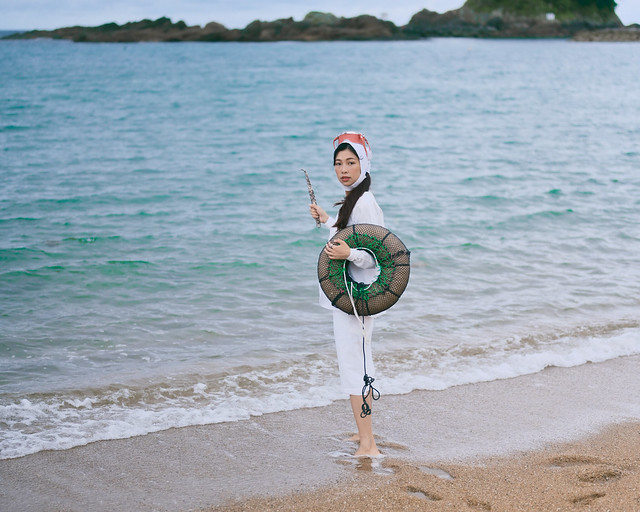
You have probably seen me share this already, but the ama san are females who free-dive into the ocean to harvest fresh seafood and seaweed, with the tradition dating back to 3000 years ago. Three thousand!!
You can put on an ama costume and walk to the nearby beach for some postcard worthy shots.

I have met many ama san by now, but Miyuki san is the youngest so far. The common traits of these amazing ladies I have met are the brightest smiles, and lots of positive vibes. They are some of the strongest women I have met.
Imagine this: an ama will free-dive into the ocean even in winter time, wearing only a very thin suit (this is the common rule so that they cannot be underwater too long to prevent over-harvesting), and collect as much shellfish and seaweed as one single breath allows.
Can we please have a collective standing ovation for all the ama san in Japan??

You can also reserve a meal that will be specially served by the ama san of the day, together with seafood of the day.
I have learnt during this trip–since I am much more well-travelled now–that there’s a consistent, common theme every local tradition and culture has across Japan, from the Ainu people in Hokkaido to the Kudaka Islanders in Okinawa and everything else in between. And that is reverence for nature.
Ancient wisdom knows how to keep the ecosystem in balance, and there’s always a hint of spirituality in it. We modern urban dwellers have so, so much to learn from these wise and brave ladies who have inherited the wisdom and spirits from 3000 years ago.
Pearl Miki
I will briefly introduce this place, since I have written a full article on this humble little oyster hut last year for Mie Prefecture’s tourism website.

Pearl Miki is situated right at the tip of Ago Bay, and the seawaters are some of the calmest and clearest I’ve seen. The fishing boats and boathouses are slightly reminiscent of Ine’s Funaya in Kyoto.

Yamaoka san and Toshiko san remembers me, and this time again, greeted me with utmost warmth and cheeriness.

Toshiko san is known to be the jewel of the region. She is so used to filming and photoshoots and interviews that she knows exactly what to do for the best shots/footages.

What I can never get tired of though, is how infectious her laughters are. One can never feel negative being next to such a jovially animated sweetheart. Toshiko san is really my favorite. I am so glad that they don’t have to wear masks anymore because it’s would be such a pity to have her heartwarming smiles hidden!

For the experience, Toshiko san will show you the pearl oyster, and you can pick one for pearl extraction.

Then, pick a pendant of your choice. You can either turn it into a necklace, or a keychain.

I double-checked with Yamaoka san to see if the price is still the same as I last visited. It is. The pearl extracting experience is 1700 yen, plus the price of the pendant of your choice. Mine was a humble 1500 yen.
Again, I tell them: it is too cheap!! Please take more of our money!! Guys, I must insist that these are real pearls that have been painstakingly cultivated right there in the little oyster huts for years!
If you are in the region, I can’t recommend this experience enough. I would go back just to meet these lovely ladies again.
Cape Anori

Cape Anori is another mini attraction in Shima City. The previous time I rented a bike nearby and cycle around the area, discovering little shrines and pizza cafe nearby. This time I get to go up to the lighthouse!

Right next to the lighthouse is a seaside cafe called Ueda Shoten (the full name is Kinkoimo Kobo Ueda Shoten Lighthouse Cafe. Haha.)
If you love sweet potatoes, I am putting this spot into your itinerary by force. Haha. But seriously!! The sweet potato desserts are SO GOOD. The parfait was just sublime, and I am not even a parfait person!
What is so special about these local sweet potatoes is that they are grown by the ama san in the Ise-Shima region, as part of their side income apart from the sea harvest. I’m glad that there are more ways for us to support the hardworking ladies, while enjoying the best afternoon treat!
Stay: Kashikojima Hojo-en
For the night in Mie, we stayed at Hojo-en, a classic Japanese ryokan. Even though it is just a few minutes walk from Kashikojima Station, know that Hojo-en does provide pick-up from the station.

Featuring a 3-storey atrium that has ample natural sunlight mimicking the ambience of an outdoor garden, somehow the interior exudes an infinity castle vibe that many know of from Demon Slayer!

The highlight of Hojo-en is definitely its outdoor public baths that overlook the stunning Ago Bay. The sauna and mizuburo (cold bath) of perfect temperature made my day.

If you are feeling generous, go for their lavish Western-Japanese room that allows you to dine in the privacy of your own comfy space. The kaiseki-style dinner is of the highest rank for these exclusive rooms, featuring Ise lobster, Matsusaka wagyu beef, abalones and more!

For the standard room, the guests will dine at the restaurant, and the course meal is nothing short of luxurious too.
SHIMAKAZE Sightseeing Limited Express
My journey with Kintetsu Railway has come to an end, but before that, I cannot miss out riding one of my favorite scenic trains–SHIMAKAZE!
Literally means “island breeze”, SHIMAKAZE connects Osaka, Kyoto and Nagoya to Ise-Shima of Mie Prefecture in one breezy ride.

The seats are made of real leather, soft and comfy just like the ones you have at 5-star hotels. Not only that, there’s a generous reclining feature and even a massage button. Talk about luxury!

If you travel with friends and family, you can also book group seating car (with a small fee), to maximize privacy and intimacy.

What I love about SHIMAKAZE is its two-storey Cafe Car, stylish like a hotel lounge! You can enjoy a special menu of food selections from the region, from savory meals such as clam seafood pilaf, Matsusaka beef curry, tantalizing desserts and more.
It was hard to say goodbye to such a fun-filled trip, but I was thankful that SHIMAKAZE brought me blissfully back to Osaka Station, which I then took the Shinkansen back to my home in Tokyo.
Check out SHIMAKAZE for more details.
You can too, embark on such a special journey, so hopefully this post has helped you in some way to plan your next trip to Japan, and don’t forget that if you purchase the KINTETSU RAIL PASS before you arrive in Japan, you can get it an a lower price, even though it is already extremely affordable!
Check out KINTETSU RAIL PASS for more!
Happy journey, travellers!


